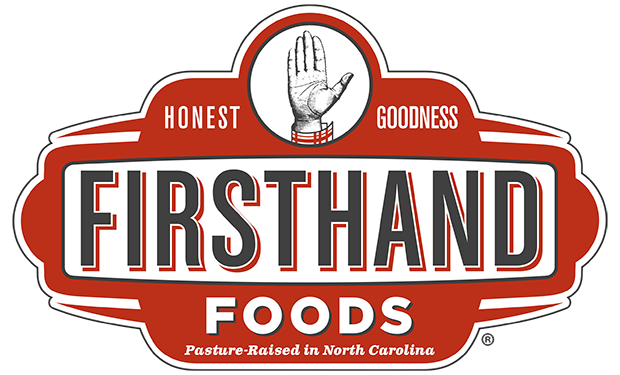In an era of climate change, I am a big proponent of regenerative grazing as the key to sustainable beef production. But I rarely get the chance to learn about the science of how it works. That’s why I was thrilled to spend some time recently with Dr. Alan Franzluebbers, a Soil Scientist with the USDA’s Agricultural Research Service. Alan is based at NC State University in Raleigh and we met through their Amazing Grazing Program. I’ve long admired Alan’s work and jumped at the chance to tag along for one of his soil sampling days.
Carpooling from the Triangle, Alan and I headed west to Guilford County to visit Don York, a former beef supplier to Firsthand Foods and one of Alan’s numerous farm collaborators. Along the way, I peppered Alan with questions about his career and research findings and came away with a deeper understanding of North Carolina’s grasslands and the role they can play in mitigating climate change.
We talked mostly about soil organic matter (or SOM for short). SOM, which is composed primarily of carbon, is a critical constituent of soils, supporting plant uptake of water and nutrients, helping soils resist compaction and erosion, and feeding soil biological activity. Agriculture has a huge impact on SOM. The more that farming practices disturb the soil, the harder it is to maintain SOM. That’s why there’s been such an emphasis on conversation tillage and other crop production practices that minimize soil disturbance. Alan’s research is making the case that managed grasslands offer even greater potential than conservation tillage for building and maintaining SOM.
Alan spends a lot of time with soil – collecting it in the field, hauling samples back to the lab, pounding it into a powder, mixing it, and then examining its various characteristics. Measuring carbon in soils has been historically expensive and time-consuming. Alan has been pioneering an alternative low-cost technique called “root zone enrichment,” which calculates the accumulated SOM within the surface 12 inches of the soil. Root zone enrichment calculations enable researchers to differentiate between soil carbon that was captured thousands of years ago (when the soil was initially formed) from soil carbon that is related to the land’s more recent (30-50 year) management history.
In the past 18 months, Alan has collected soil samples from more than 300 beef cattle operations in North Carolina and Virginia. Fortunately for us, this includes one-third of Firsthand Foods’ beef producers. His preliminary findings strongly suggest that grasslands have more soil organic carbon (from recent management activities) than cropland, including cropland that has been managed using no-till conservation practices. And, in some instances, grasslands have higher SOM than woodlands.
It has been suggested that as much as 47% of the climate mitigation potential within the agricultural sector will need to come from sequestration of carbon in soil. North Carolina is home to 1 million acres of pasture, much of which could be managed to optimize SOM. This shines a light on the role of livestock, especially beef. When moved frequently at appropriate stocking densities, cattle provide benefits to grasslands, including increased biomass production, improved fungal & bacterial activity and reduced erosion. That’s because grasslands co-evolved in the presence of large herbivores (think bison) and have adapted to flourish under conditions of quick bursts of animal activity. That’s the aim of regenerative grazing – to take advantage of this symbiotic relationship not only for the health of the animal but for the health of grasslands and soil.
The good news is regenerative grazing makes economic sense for livestock producers. Take Joe and Robin Hampton of Back Creek Farm in Mt. Ulla, NC, one of Firsthand Foods’ founding members. More than 30 years ago, they took over an old cotton farm with depleted soils that had less than one percent SOM. Over time, they built a diversified system with multiple species (beef cattle and lamb mostly) that live together outdoors and are rotated within and between pastures frequently to avoid overgrazing, control unwanted plants, build forage diversity, and leverage animal manure for fertility. As a result, the Hamptons haven’t needed to apply nitrogen fertilizers in over 15 years and herbicide use is minimal if at all. Their soil organic matter has increased between 30 and 40 percent, which helps with water retention and infiltration. Better quality and volume of forages allows them to support higher stocking densities, which means they make more money off the same acreage.
After Alan gets the chance to spend some more time in his lab and write up his findings, he intends to expand his research to include multiple states, characterizing the potential for grasslands throughout the southeast to capture and retain soil carbon. He hopes his research will galvanize policies and market-based incentives that reward livestock producers for building SOM and providing other ecological services. His research has inspired me to keep on promoting pasture-raised meats as critical options for consumers concerned about climate change.
As Alan got all the soil samples into the back of his car and made plans to return later in the spring to collect more, Don suggested we take a small detour on the way back to Homeland Creamery, one of North Carolina’s few remaining working dairies, to try their butter pecan ice cream. There was no better ending to a nearly perfect day full of sunshine and time outdoors learning from an expert.

